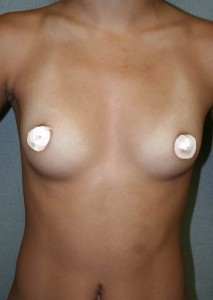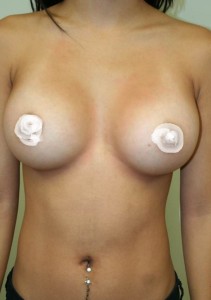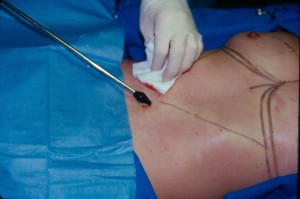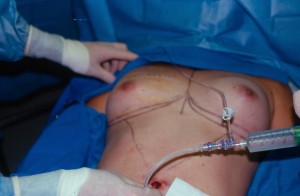-
TUBA: Breast Augmentation that’s Clearly Better!
Sunday, June 29th, 2025by Dr. Robert Shumway, Cosmetic Surgeon
 The introduction of surgery performed by endoscope has led to many innovative and improved cosmetic surgery techniques. These new methods have resulted in smaller incision lines with less scarring, briefer operation times and shorter recovery periods.
The introduction of surgery performed by endoscope has led to many innovative and improved cosmetic surgery techniques. These new methods have resulted in smaller incision lines with less scarring, briefer operation times and shorter recovery periods.Endoscopic surgery is less invasive and traumatic than older methods of cosmetic surgery and is becoming ever more popular with both surgeons and their patients.
Breast augmentation has been one of the biggest beneficiaries of endoscopic surgical techniques. You can now have breast enlargement surgery done without tell-tale scars on (or anywhere near) your breasts. This way, nobody will know you have had your breasts enlarged but you.
What is T.U.B.A. Breast Augmentation?
 Transumbilical Breast Augmentation (better known as T.U.B.A.) was invented in October of 1991 by Houston, TX surgeon Gerald W. Johnson. When performed by a trained and competent doctor, T.U.B.A. is a less invasive approach to surgical breast enlargement surgery with a faster recovery, fewer complications and usually superior results.
Transumbilical Breast Augmentation (better known as T.U.B.A.) was invented in October of 1991 by Houston, TX surgeon Gerald W. Johnson. When performed by a trained and competent doctor, T.U.B.A. is a less invasive approach to surgical breast enlargement surgery with a faster recovery, fewer complications and usually superior results.The main benefit of “TUBA” is the lack of visible scars on the breasts or armpits. With this endoscopic approach, only one incision is made within the belly button for placement of the breast implants.
In the earlier stages after the introduction of this technique, breast implants were only placed exclusively in the sub-glandular position (over the muscle). As more experience was gained with this technique, surgeons realized that sub-pectoral implant placement was also possible and is in many ways easier to perform.
Sub-pectoral implant placement allows many women with smaller breasts to have adequate tissue coverage beyond the edges of the implants. Many women report that under-the-muscle placement gives them a more natural-looking result.
How TUBA Surgery is Performed
Since TUBA surgery is often completed in less than an hour – sometimes in as little as 20 to 30 minutes by the most experienced surgeon – this procedure is most commonly performed under intravenous (IV) sedation (also known as conscious sedation), combined with local anesthesia.
 The IV sedation promotes sleep, loss of memory, immobility and inability to feel pain. The local anesthesia provides additional pain relief and – through constriction of the blood vessels – decreases the chances of bleeding in the incision or dissection areas.
The IV sedation promotes sleep, loss of memory, immobility and inability to feel pain. The local anesthesia provides additional pain relief and – through constriction of the blood vessels – decreases the chances of bleeding in the incision or dissection areas.After you have been sedated, prepped and stabilized, your surgeon will give injections of local anesthetic in and around the navel area and also in your treatment area. He or she will then make the appropriate incision in your navel and start local dissection of the tissues around the umbilicus (belly button).
 Your surgeon will then insert a tunneling device which will be used to tunnel from your belly button to each of your breasts. During or after the creation of the tunnels, an endoscope (a small camera) will be inserted to make sure compartments have been properly shaped for placement of the implants.
Your surgeon will then insert a tunneling device which will be used to tunnel from your belly button to each of your breasts. During or after the creation of the tunnels, an endoscope (a small camera) will be inserted to make sure compartments have been properly shaped for placement of the implants.Your implants are then inserted through the endoscopic tube and placed in the proper position. Then the implants are filled with saline until the desired shape and firmness is achieved. The entire process takes less than an hour, in most cases.
Breast prostheses sizing should always be determined before any surgery through consultation with you, the patient. Likewise, the appearance of the breasts should be fully confirmed throughout the surgery with the use of breast tissue expanders.
TUBA Recovery Time
Most patients experience very little pain at all when they wake up after the TUBA procedure. A few hours after the surgery you may experience some discomfort or pressure in your chest and abdomen area as the local anesthetic wears off. You should not experience any pain that cannot be handled by the oral medications that will be provided to you.
There will be a variety of changes in the next few weeks during the healing phase, but not to worry. You must have patience while your body heals, especially with sub-pectoral (under the muscle) placement of implants.
Your muscles have been through trauma during the surgery and must be allowed to heal before all is back to normal. Rest assured, the healing will take place and life will return to normal in a month or two. And the results will look fantastic!
(published April 12, 2012)
 Dr. Robert Alan Shumway, MD, FACS, Director of Shumway Cosmetic Surgery in La Jolla, California, is a Duke University-trained cosmetic surgeon. Dr. Shumway has performed literally thousands of TUBA (TransUmbilical Breast Augmentation) procedures over the past 18 years. Dr. Shumway has also been teaching other surgeons how to “TUBA” for well over fifteen years. For more information on T.U.B.A. breast augmentation, or to schedule a consultation, visit his website: shumwaycosmeticsurgery.com.
Dr. Robert Alan Shumway, MD, FACS, Director of Shumway Cosmetic Surgery in La Jolla, California, is a Duke University-trained cosmetic surgeon. Dr. Shumway has performed literally thousands of TUBA (TransUmbilical Breast Augmentation) procedures over the past 18 years. Dr. Shumway has also been teaching other surgeons how to “TUBA” for well over fifteen years. For more information on T.U.B.A. breast augmentation, or to schedule a consultation, visit his website: shumwaycosmeticsurgery.com.


